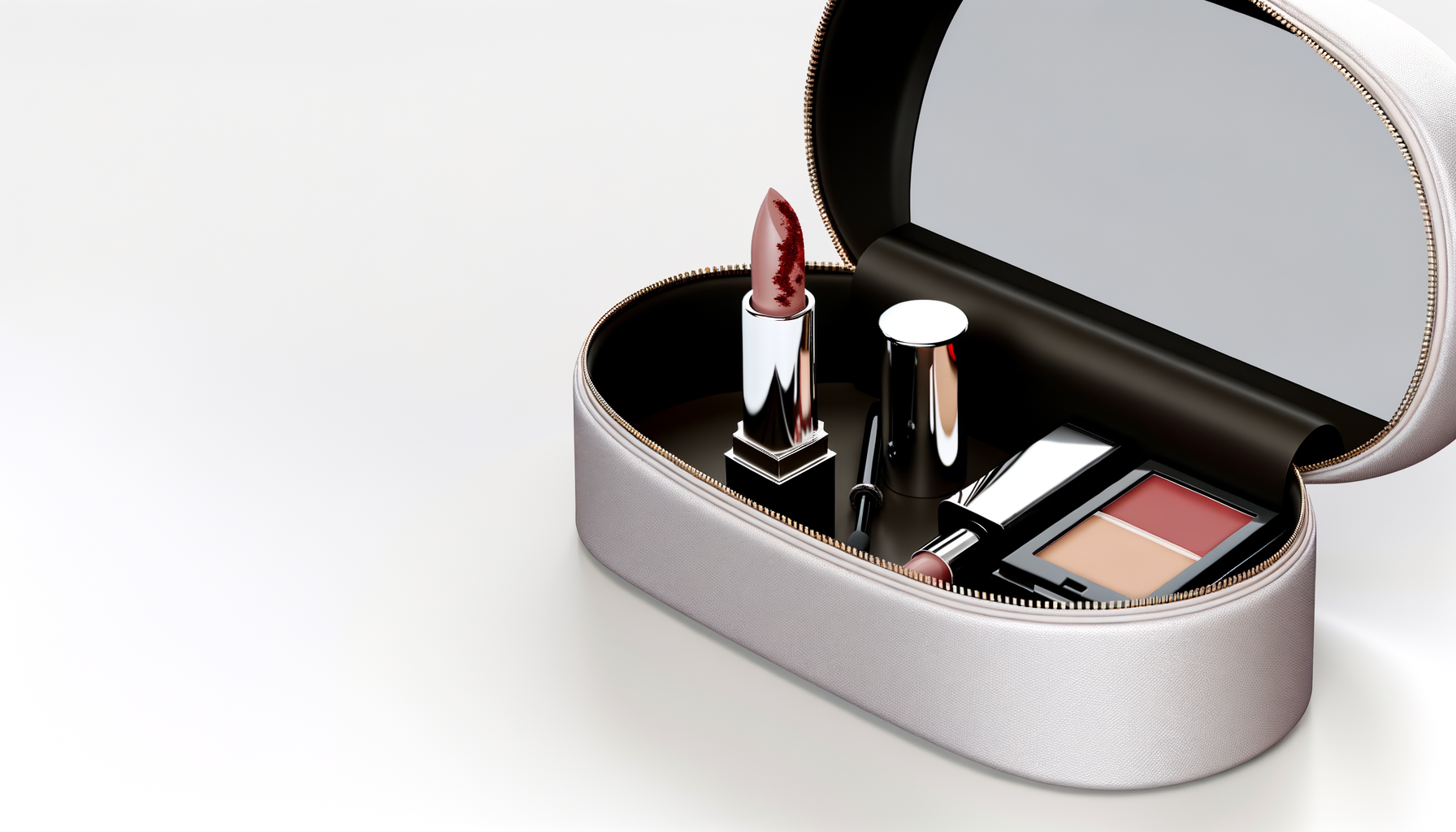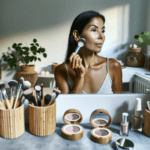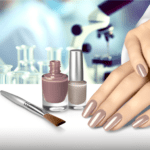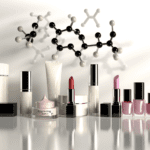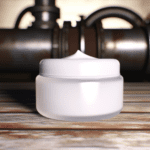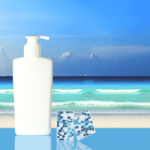Introduction
The Hidden Dangers in Cosmetics
When we think of cosmetics, we often envision products that enhance beauty and boost confidence. However, lurking beneath the vibrant colors and silky textures of our favorite makeup items, there may be hidden dangers that could pose a threat to our health. One such peril is the presence of heavy metals, which can contaminate cosmetic products through various means. These toxic elements, even in trace amounts, have the potential to accumulate in the body over time, leading to a myriad of health issues.
Why Lead in Lipstick is a Concern
Lipstick is a staple in many makeup bags, but it’s also a product that can be a source of lead exposure. Lead, a heavy metal with no known beneficial role in the human body, can be found in lipsticks due to its natural occurrence in the minerals used as pigments. Although the levels of lead in lipsticks are typically low, the frequent application and inadvertent ingestion of lipstick can contribute to an individual’s overall lead exposure. This is particularly concerning given that lead has been linked to a range of health problems, including neurological damage and hormonal disruptions.
Overview of Health Risks Associated with Heavy Metals
- Neurological Effects: Heavy metals like lead and mercury can impair cognitive function, memory, and behavior.
- Reproductive Harm: Metals such as cadmium and lead have been associated with reduced fertility and adverse outcomes during pregnancy.
- Organ Damage: Chronic exposure to heavy metals can lead to kidney, liver, and heart damage.
- Carcinogenic Potential: Certain heavy metals, including arsenic and chromium, have been classified as carcinogens, with the potential to cause cancer.
Given these risks, it is crucial for consumers to be aware of the potential for heavy metal contamination in cosmetics and to understand how to minimize their exposure.

Do you have the most commonly used but toxic, disease bringing chemicals in your skin care? Many chemicals in skincare are hormone disruptors and make menopause symptoms worse.
Find out more…
Understanding Lead Contamination
Sources of Lead in Cosmetics
Lead contamination in cosmetics can arise from various sources. One primary source is the pigments used as colorants, which may naturally contain trace amounts of lead. These pigments are often derived from minerals such as clays and talc, which are mined from the earth where lead is naturally found. Additionally, the manufacturing process itself can introduce lead contamination, as can the use of certain ingredients of natural mineral origin. Despite good industrial practices, the residual presence of minute and unavoidable traces of metal cannot be entirely prevented.
How Lead Enters Our Makeup
Lead enters our makeup primarily through two pathways: as a contaminant in the raw materials used to produce cosmetics and during the manufacturing process. In the case of lipsticks, for example, the colorants derived from mineral sources may contain lead. Furthermore, environmental pollution can contribute to the presence of lead in the raw materials. The lack of stringent regulations and oversight in some regions can exacerbate the issue, allowing lead-contaminated products to reach consumers.
Regulations and Standards for Lead in Cosmetics
Regulations and standards for lead in cosmetics vary by country, but they generally aim to limit the concentration of lead to safe levels. In the United States, the Food and Drug Administration (FDA) has issued guidance recommending a maximum level of 10 parts per million (ppm) for lead as an impurity in cosmetic lip products and externally applied cosmetics. However, this guidance is not enforceable as a regulation. The European Union has more stringent regulations, prohibiting the use of lead as an ingredient in cosmetics and setting strict limits on its unintentional presence. Despite these regulations, the FDA and other regulatory bodies rely on cosmetic companies to conduct their own safety assessments and testing, as there is no pre-market approval process for cosmetics in many countries.
It is important to note that while regulations set limits, they do not eliminate the presence of lead in cosmetics. Consumers must remain vigilant and may choose to support brands that go above and beyond regulatory requirements by conducting independent testing to ensure the safety of their products.
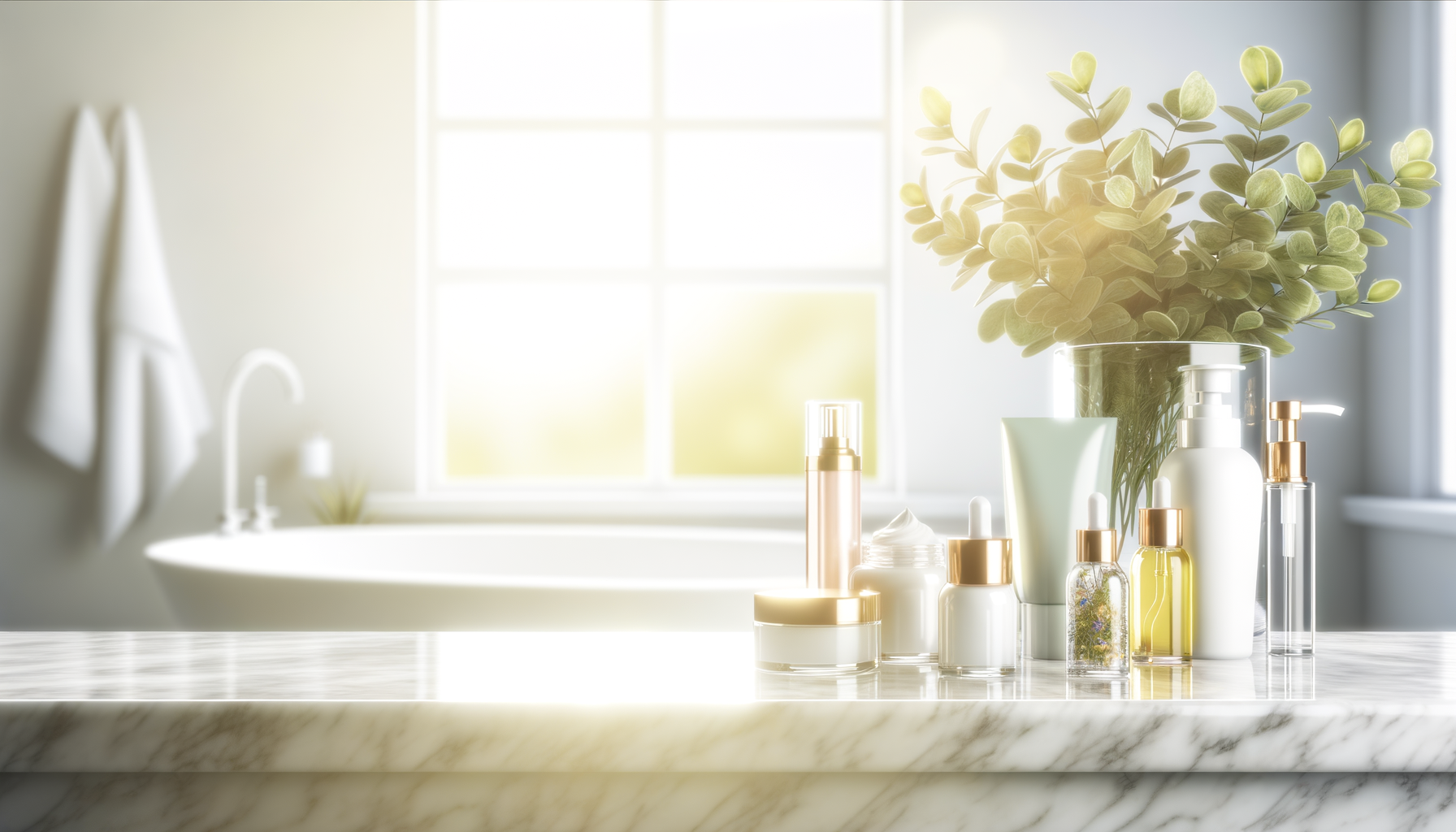
Popular Read: Endocrine Disruptors in Skincare: What You Need to Know
Health Implications of Lead Exposure
Short-term and Long-term Health Effects
Lead exposure, even at minimal levels, can have significant health consequences. In the short term, ingestion of lead through products such as lipstick can lead to symptoms like abdominal pain, constipation, fatigue, and headache. However, the more insidious threat lies in the long-term effects. Chronic exposure to lead can accumulate in the body over time, leading to serious health issues such as cognitive deficits, kidney damage, and an increased risk of hypertension. Moreover, lead exposure has been linked to neurotoxicity, which can manifest as memory loss, mood disorders, and decreased cognitive function.
Specific Risks for Women’s Health
Women, particularly those of childbearing age, face unique risks when it comes to lead exposure. Lead can be stored in the bones and released during pregnancy, potentially exposing the fetus. This can result in premature birth, low birth weight, and developmental delays in infants. Additionally, lead exposure is associated with reduced fertility and menstrual irregularities in women. It’s crucial for women to be aware of these risks, as the cosmetics they use daily, including lipstick, may contribute to their overall lead exposure.
The Impact on Hormonal Balance and Aging
Lead’s interference with hormonal systems can have profound effects on health and aging. It can mimic or inhibit the actions of hormones, disrupting the delicate balance of the endocrine system. This disruption can lead to thyroid problems, altered stress responses, and changes in metabolism. Over time, such hormonal imbalances can accelerate the aging process, leading to premature aging of the skin and other organs. The presence of lead in everyday cosmetics like lipstick means that the risk of such hormonal and aging effects is a constant concern for consumers.
It is essential to recognize the gravity of lead exposure through cosmetics and take proactive steps to minimize risks. Understanding the potential for both short-term symptoms and long-term health consequences can empower individuals to make safer choices regarding the products they use on their bodies.
Identifying and Avoiding Lead in Lipstick
How to Read Labels for Lead Content
Unfortunately, lead content is not typically listed on lipstick labels, as it’s often a contaminant rather than an intentionally added ingredient. However, you can take steps to minimize your exposure. Look for brands that are transparent about their testing for heavy metals and actively ensure the purity of their ingredients. Research the brand’s commitment to safety and check for any certifications that may indicate rigorous testing. Additionally, avoid lipsticks that are marketed as “long-lasting” or “wear-resistant,” as these may contain higher concentrations of lead and other heavy metals to achieve their durability.
Natural and Safer Alternatives to Traditional Lipstick
Switching to natural and organic lipstick brands can be a safer alternative. These brands often use plant-based ingredients and are more likely to conduct thorough testing for heavy metals. Look for products with a minimal ingredient list and those that use natural pigments derived from fruits and vegetables. Some safer alternatives include lipsticks made with shea butter, jojoba oil, and other natural moisturizers that provide color and hydration without the risk of lead exposure.
Tips for Reducing Exposure to Lead in Makeup
- Choose Wisely: Opt for reputable brands that prioritize product safety and perform regular testing for heavy metals.
- Less is More: Limit the number of cosmetic products you use daily, as each product may add to your overall exposure to lead and other contaminants.
- Stay Informed: Keep abreast of research and reports from consumer advocacy groups and regulatory agencies regarding lead in cosmetics.
- Advocate for Change: Support initiatives and legislation that call for stricter regulations and transparency in the cosmetic industry.
By being proactive and informed, you can significantly reduce your exposure to lead in lipstick and other makeup products, contributing to your long-term health and well-being.
Also pay attention to your skincare! Stay away from water-based skincare as water is a breeding ground for bacteria, mold and microbes, which means that water-based lotions, creams, balms etc. contain chemical preservatives. These are not only deadly to the microbes but also harmful for humans; many act as endocrine disruptors (hence they are called endocrine-disrupting chemicals, EDC, which means they disturb your hormone system, which, after all, contributes even more to dry and / or sagging skin.
Do you know the three main ways that your body gets in touch with harmful chemicals with everyday products? Knowledge is Power!
The Ultimate Detox Guide will tell you how to lower your exposure to harmful chemicals!

Detoxifying from Heavy Metals
Methods to Detoxify Your Body from Lead
Detoxification from heavy metals such as lead is a process that should be approached with caution and, ideally, under the guidance of a healthcare professional. Chelation therapy is one of the most common methods used to remove heavy metals from the body. This treatment involves the administration of chelating agents, such as EDTA (ethylene diamine tetra-acetic acid), which bind to heavy metals and facilitate their excretion. However, chelation therapy should only be conducted by a qualified medical practitioner due to potential side effects and the need for careful monitoring.
Lifestyle Changes to Support Detoxification
Supporting your body’s natural detoxification processes is essential when dealing with heavy metal exposure. Hydration is key; drinking plenty of water helps to flush toxins out through the kidneys. Engaging in regular exercise can also aid in detoxification by promoting circulation and sweating, which can help to eliminate toxins. Additionally, avoiding further exposure is crucial; this means being mindful of the sources of heavy metals, such as certain types of fish, industrial areas, and even some household items.
Supplements and Foods that Help with Heavy Metal Detox
Certain foods and supplements can assist in the detoxification of heavy metals from the body. Foods rich in antioxidants, such as berries, leafy greens, and nuts, can help protect the body from oxidative stress caused by heavy metals. Sulfur-rich foods like garlic, onions, and cruciferous vegetables enhance the function of glutathione, a key detoxification antioxidant in the body.
Supplements such as spirulina and chlorella have been shown to bind to heavy metals and may aid in their removal, while coriander (cilantro) has been traditionally used for its chelating properties. Minerals like zinc and selenium can also be beneficial, as they can help displace heavy metals from their binding sites. However, it is important to consult with a healthcare provider before starting any supplementation, as they can provide personalized advice based on individual health needs and ensure that supplements do not interact with other medications.
Ultimately, while there are methods and lifestyle changes that can support the detoxification of heavy metals, it is important to approach this process with care and professional guidance to ensure safety and effectiveness.
Advocacy and Change
The Role of Consumer Awareness in Product Safety
Consumer awareness plays a pivotal role in ensuring product safety, particularly in the cosmetics industry. Informed consumers can drive change by demanding transparency and safer products. By educating themselves about the potential hazards of heavy metals like lead in cosmetics, individuals can make more conscious purchasing decisions. This collective awareness can pressure manufacturers to adhere to stricter safety standards and to innovate with consumer health in mind. Additionally, consumers can spread awareness through social media and word-of-mouth, further amplifying the call for safer cosmetics.
Supporting Brands with Transparent and Safe Practices
Choosing to support brands that prioritize transparency and safe practices is a powerful way for consumers to advocate for change. By purchasing from companies that disclose their ingredient lists, source ethically, and conduct rigorous safety testing, consumers can help create a market where safety and transparency are the norm. It is essential to recognize and reward brands that go above and beyond regulatory requirements, as this encourages other companies to follow suit. Consumers can also engage with brands directly, providing feedback and expressing their desire for products free from harmful substances like lead.
How to Advocate for Stricter Regulations
Advocating for stricter regulations on lead and other heavy metals in cosmetics is crucial for long-term change. Consumers can take action by:
- Signing petitions that call for tighter regulations and standards for cosmetic safety.
- Writing to legislators and regulatory bodies such as the FDA, urging them to update and enforce more stringent guidelines on heavy metal content in cosmetics.
- Participating in consumer advocacy groups that focus on cosmetic safety.
- Supporting non-profit organizations that conduct independent research and lobby for safer cosmetics.
By taking these steps, consumers can contribute to a larger movement that holds the cosmetics industry accountable for the safety of its products. The goal is to ensure that beauty does not come at the cost of health, and that future generations can trust the products they use daily.
Conclusion
Empowering Choices for Health and Beauty
The exploration of heavy metals in cosmetics, particularly lead in lipstick, has unveiled a hidden threat within our makeup bags. Empowering consumers begins with education and awareness. By understanding the potential risks associated with prolonged exposure to heavy metals, individuals can make informed decisions about the products they choose to use. The beauty industry is responsive to consumer demands, and as awareness grows, so does the availability of safer alternatives. Empowering choices for health and beauty means advocating for transparency in ingredient lists and supporting brands that prioritize consumer safety without compromising on quality or performance.
The Journey to a Toxin-Free Lifestyle
Transitioning to a toxin-free lifestyle is a journey that involves scrutinizing the ingredients in our makeup bags and beyond. It’s about adopting a holistic approach to health, recognizing that what we put on our skin can be just as important as what we put in our bodies. This journey may involve a shift towards natural and organic products, which often use ingredients with a lower risk of heavy metal contamination. It also means supporting initiatives and regulations that aim to reduce the presence of harmful substances in consumer products. Ultimately, a toxin-free lifestyle is a commitment to personal well-being and environmental health.
Final Thoughts on Lead-Free Cosmetics
The call for lead-free cosmetics echoes a broader demand for safer personal care products. While studies have shown that the levels of lead in lipsticks are generally below the limits set by regulatory agencies, there is no safe level of lead exposure. Therefore, the push for completely lead-free cosmetics is not only reasonable but necessary. As consumers become more conscious and vocal, the industry must respond by adopting cleaner formulations and more rigorous testing methods. The future of cosmetics lies in the balance between beauty and safety, and it is through collective action and responsible manufacturing that this balance can be achieved.
